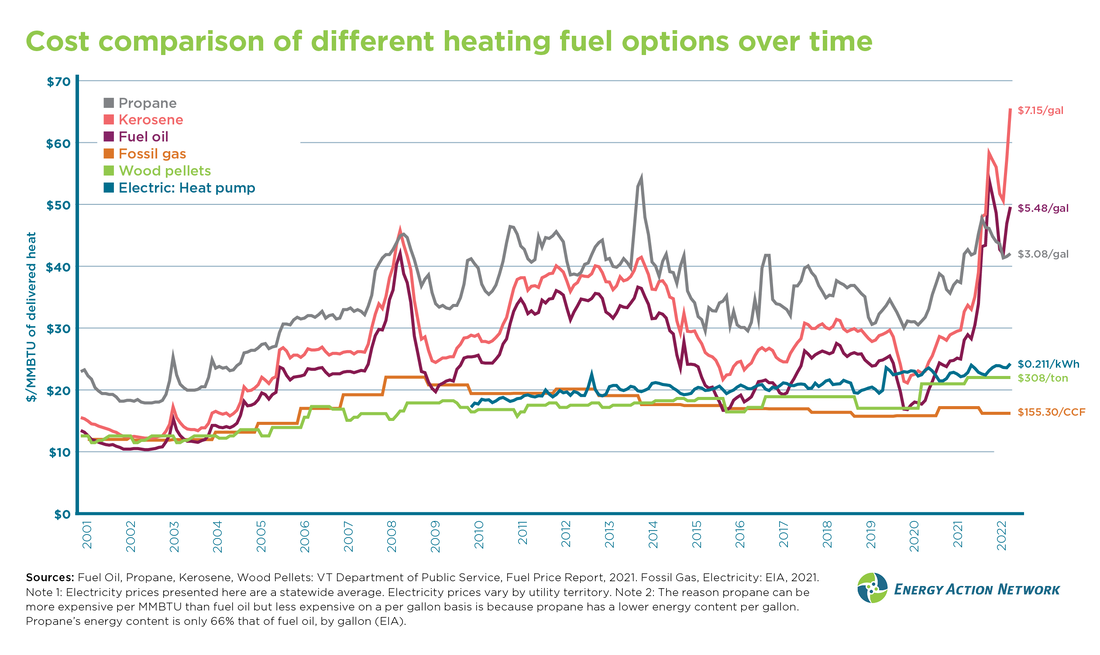|
The Affordable Heat Act aims to bring down the upfront costs of any technology that brings down people's carbon emissions. It identifies multiple technologies that may be useful in that transition, but any technology that accomplishes carbon emissions savings qualifies. In that way, it's "technology agnostic", not trying to steer Vermonters toward any one technology. Having said that, I've gotten a lot of questions about specific technologies. Hopefully this post will be useful in explaining a couple of the commonly asked-about technologies. Heat pumps Older, "standard" heat pump technology was not very useful in Vermont because they were not sufficiently efficient between 0˚F and 32˚F. Thankfully, cold climate heat pumps, which became available around 2010, are useful down to 0˚F. I've even used mine in colder temperatures, it's just that heat pumps have to work harder the colder it gets. For that reason most installers don't recommend removing your existing heating system and use that as a backup for those extremely cold days. For more information check out this site about how heat pumps work. (As a physics teacher, I think they are very cool.) The advantage of heat pumps is that the heat they provide is significantly cheaper than fuel oil, propane, and kerosene per unit of delivered heat. It's worth noting that heat pump technology is significantly different than electric resistance heating (baseboard electric or electric space heaters). Since heat pumps aren't "burning" the electricity, just moving the heat from the outside to the inside, they are significantly more efficient than electric baseboard or electric space heaters. From the graph above, check out the volatility of propane, kerosene, and fuel oil. You can also see how stable and cheap the heat delivered from wood pellets and heat pumps has been.
Pellets For those interested in automating a pellet heating system, it would be good to know about Pellergy, a Vermont-based business which allows homeowners to switch out their oil burner with a pellet burner - no need to change anything else about your heating infrastructure (thermostat, delivery system, etc.) This combines with a hopper to hold pellets, which allows the system to be automated. If you have a technology-related question that's not addressed here, please let me know through the feedback form! Comments are closed.
|
Details
AuthorWrite something about yourself. No need to be fancy, just an overview. Archives
June 2024
Categories |


 RSS Feed
RSS Feed